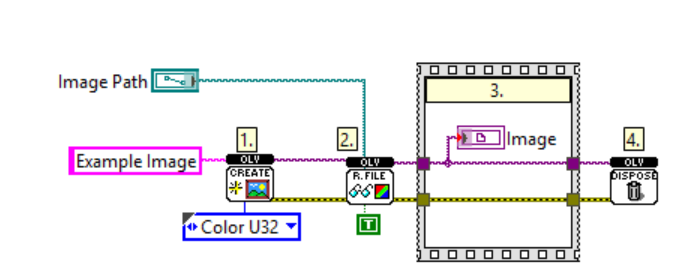On this page
save
Read image file
This LabVIEW snippet demonstrates a fundamental image loading and display sequence using OpenLvVision functions.
Create Image Reference:
- The “OLVCreate” function (1) initializes a new, empty image reference.
- In LabVIEW, image data is handled by references, meaning the wire carries a pointer to the image data’s location in memory, not the image data itself.
- This is a crucial distinction, as image references do not adhere to LabVIEW’s standard dataflow paradigm where data is copied between functions.
Read Image File:
- The “OLVReadFile” function (2) loads an image from the specified file path.
- When the “UseFilePartImageType” input is set to TRUE (as indicated by the constant), the appropriate image file format reader is automatically selected, simplifying the loading process.
Draw Image to Control:
- Draws the image onto a control.
- Note: If the control is configured for snapshots, it will retain a copy of the image; otherwise, the image will be lost after disposal.
Dispose Image:
- Finally, the “OLVDispose” function (5) releases the memory allocated for the image data referenced by the initial “OLVCreate” function.
- It is essential to dispose of image references when they are no longer required to prevent memory leaks and ensure efficient memory management within your LabVIEW application.
